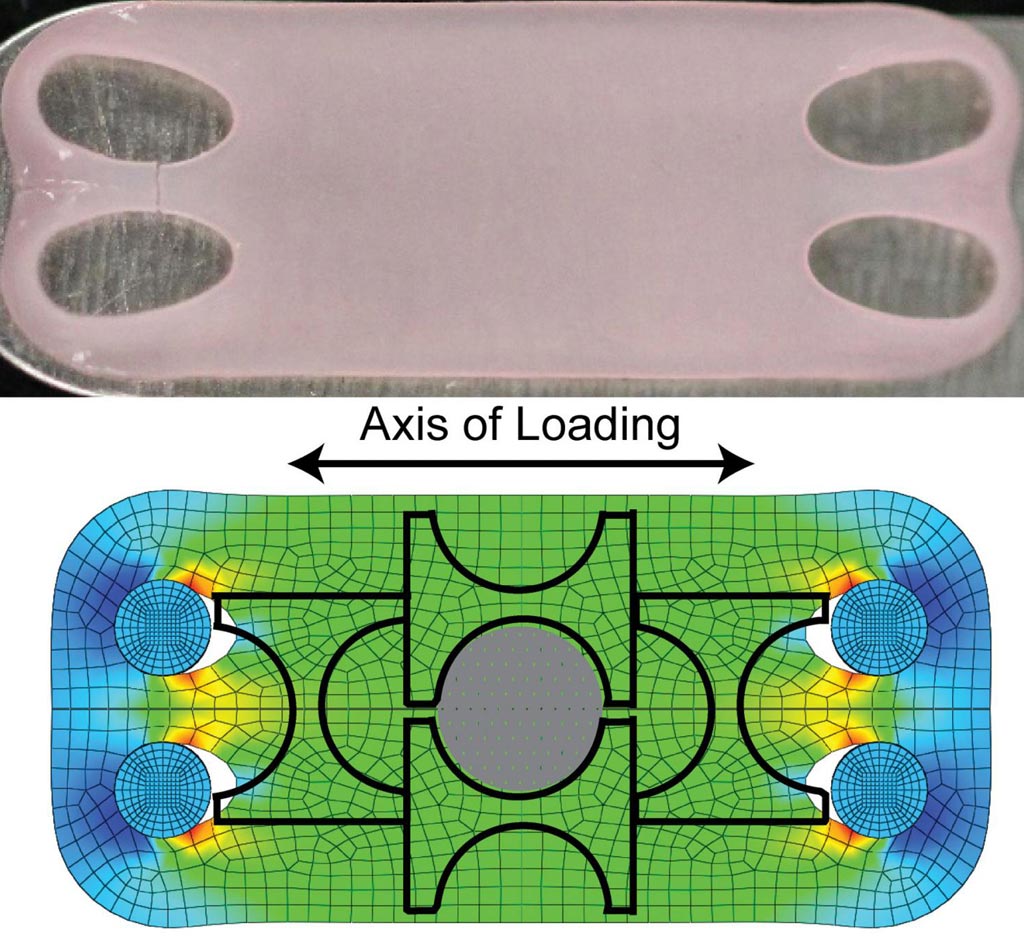Artificial Cartilage Could Help People Regain Mobility
By HospiMedica International staff writers
Posted on 27 Jun 2017
Self-assembled artificial cartilage grown under tension, but without a supporting scaffold, shows similar mechanical and biochemical properties to those of natural cartilage, according to a new study.Posted on 27 Jun 2017
Developed by researchers at the University of California Davis (UCD; Sacramento, USA) and Stanford University (CA, USA), the tissue is grown from human chondrocytes in a scaffold-free system, which represents natural conditions more closely. During the self-assembly process, the articular cartilage is placed under tension, which together with matrix remodeling and synthesis agents leads to neocartilage with tensile properties approaching those of native tissue.

Image: Lab-grown cartilage grown with tension (top) and computer modeling of the strain distribution across the artificial tissue (Photo courtesy of Kyriacos Athanasiou / UCD).
The researchers successfully showed that the tension stimulation could generate enhanced anisotropic human neocartilage with a nearly six-fold improvement in tensile properties over unstimulated tissue, which could allow the engineering of mechanically robust biological replacements for native tissue. The researchers also demonstrated that implantation of the tension-stimulated cartilage tissues resulted in the formation of a tissue morphologically reminiscent of native cartilage. The study was published on June 12, 2017, in Nature Materials.
“We can finally engineer tissue that has the tensile and compressive characteristics of native tissue; the artificial cartilage that we engineer is fully biological with a structure akin to real cartilage,” said senior author Professor Kyriacos Athanasiou, PhD, of the UCD department of biomedical engineering. “Most importantly, we believe that we have solved the complex problem of making tissues in the laboratory that are strong and stiff enough to take the extremely high loads encountered in joints such as the knee and hip.”
Cartilage structures and functions can be damaged due to a variety of causes, such as a fall or traumatic sport-accident, previous knee injuries, or wear and tear over time. Unfortunately, articular cartilage does not usually regenerate after injury or disease, leading to loss of tissue and formation of a defect.
Related Links:
University of California Davis
Stanford University














